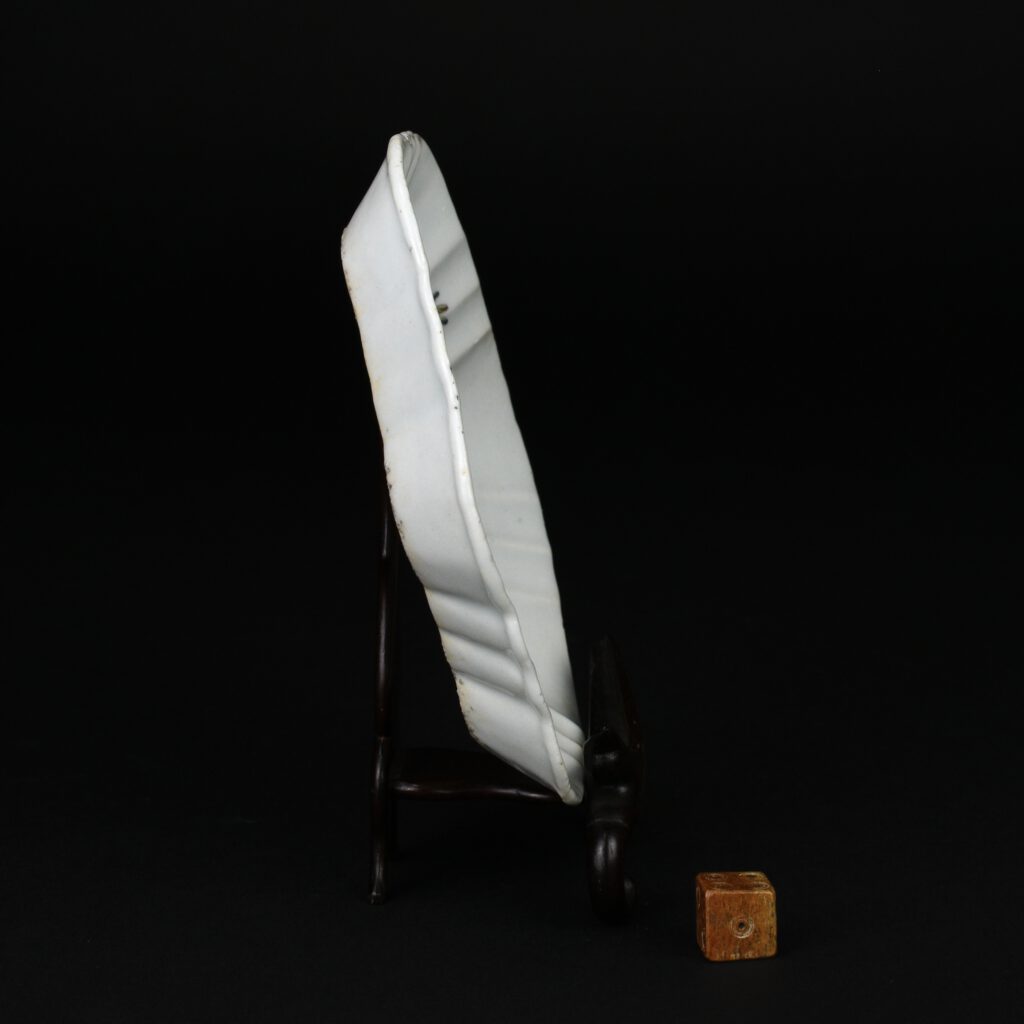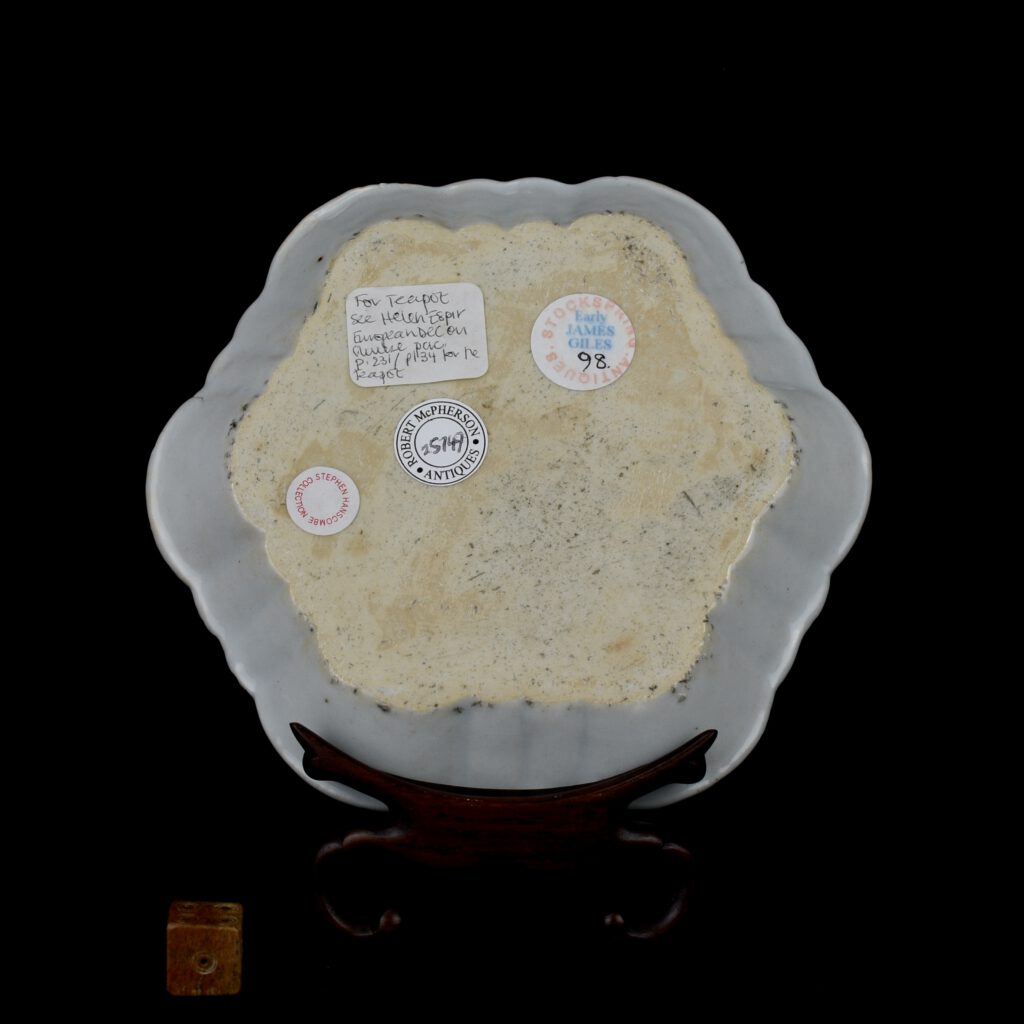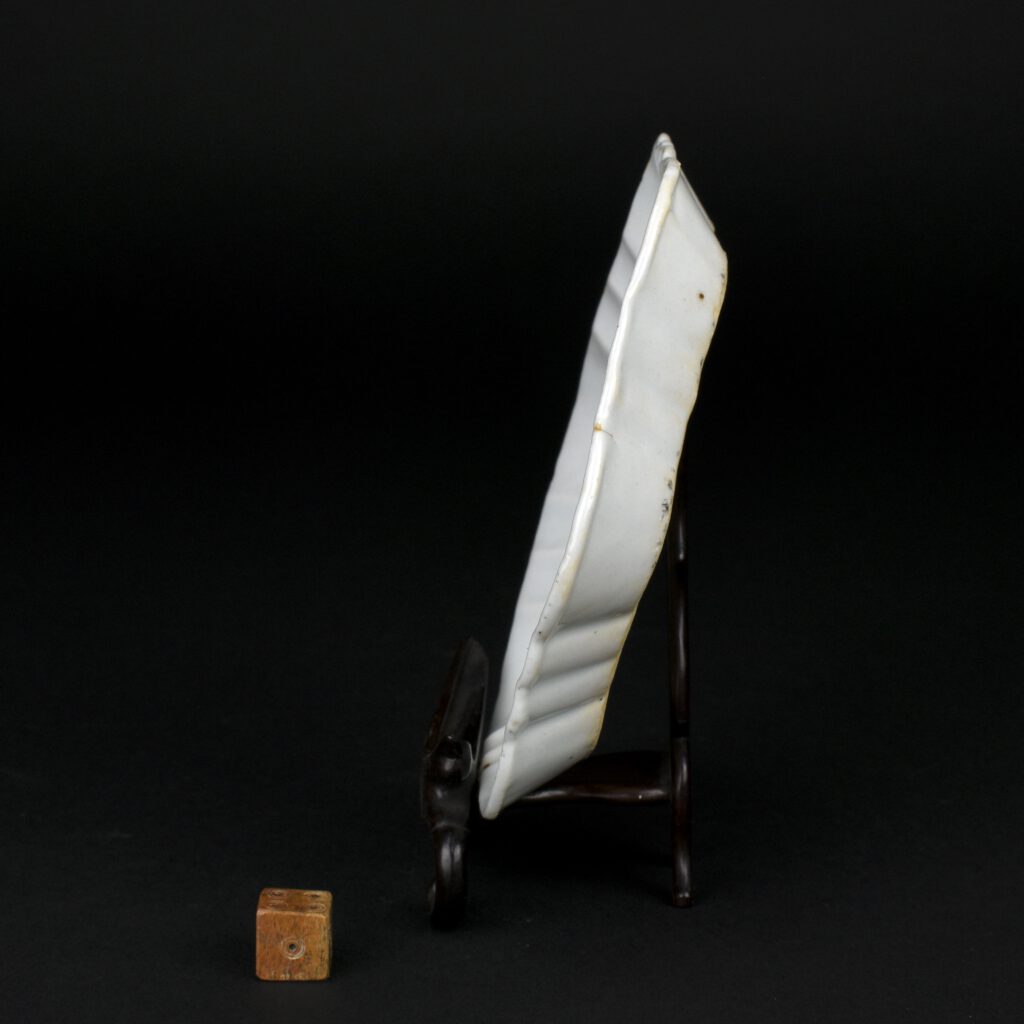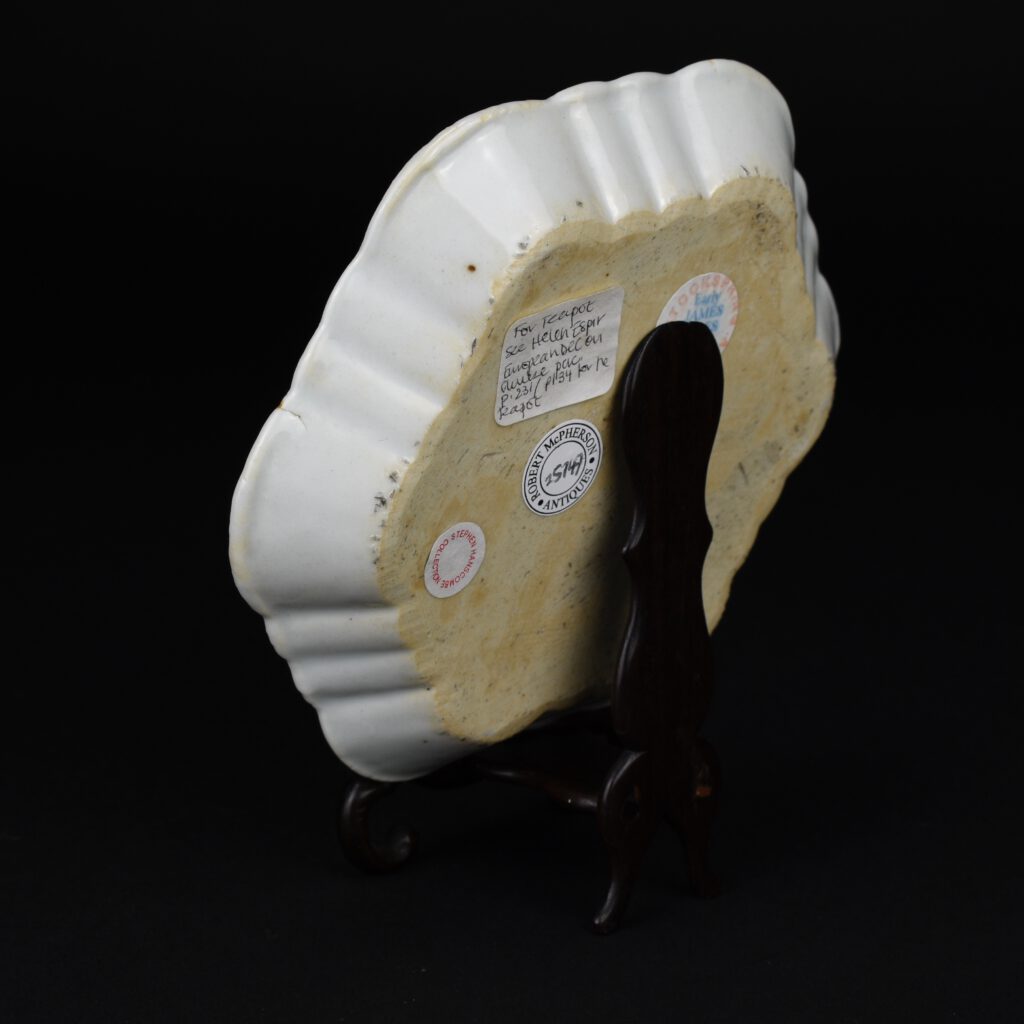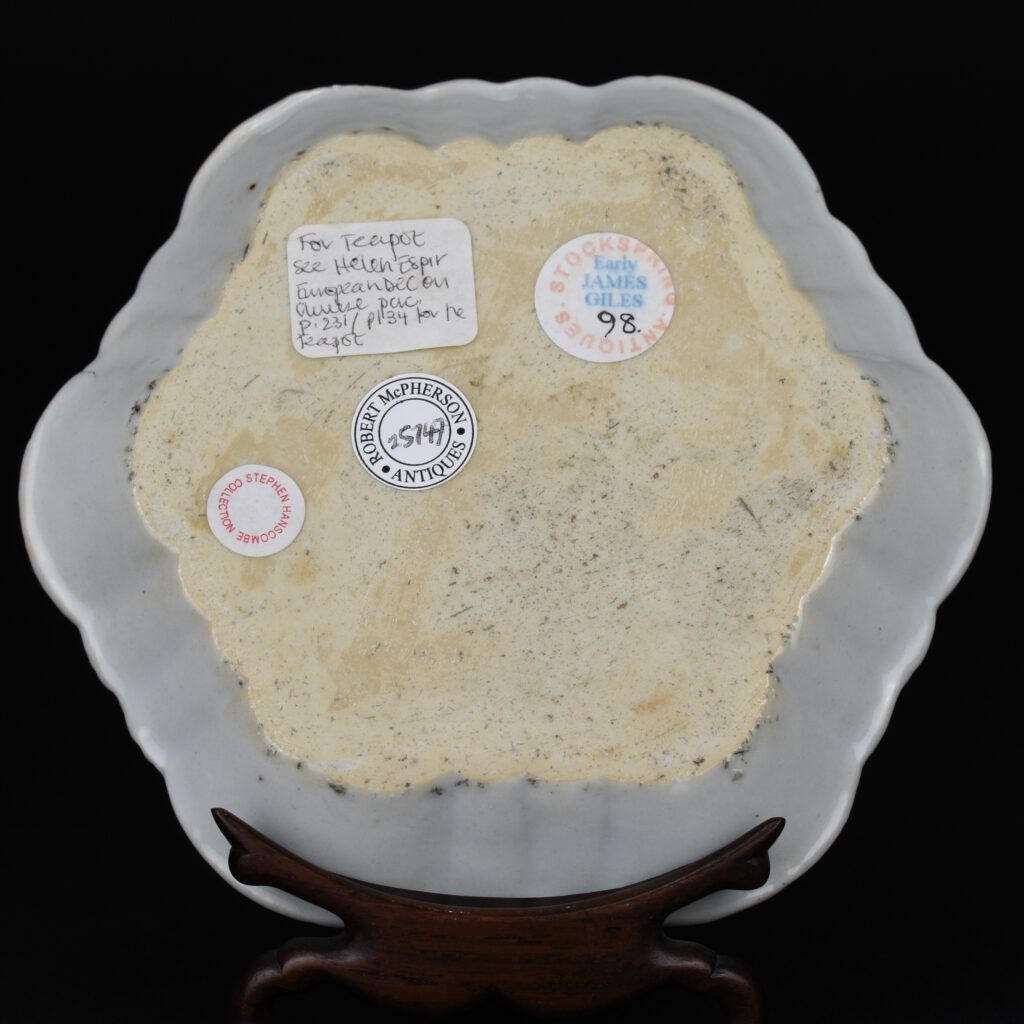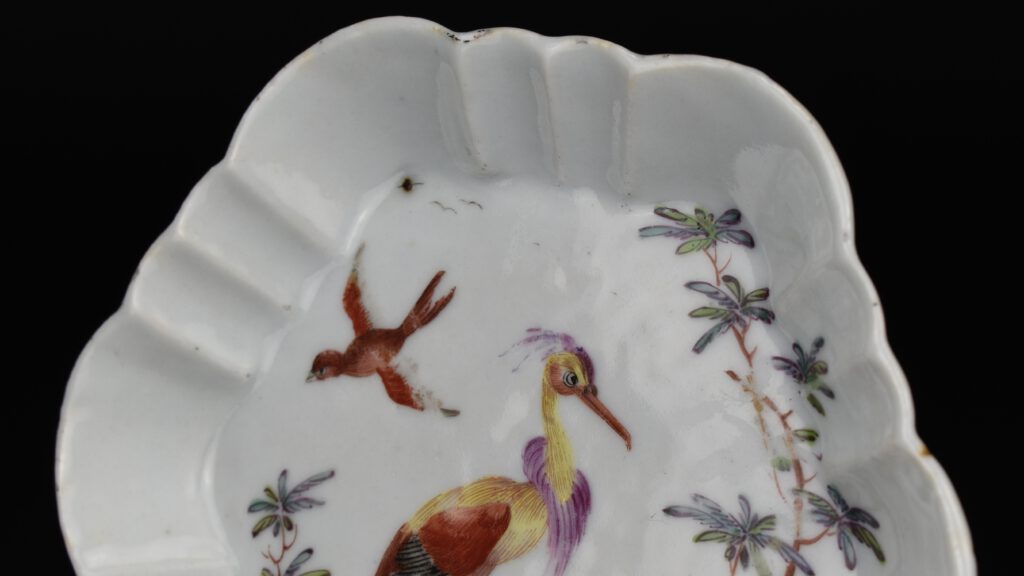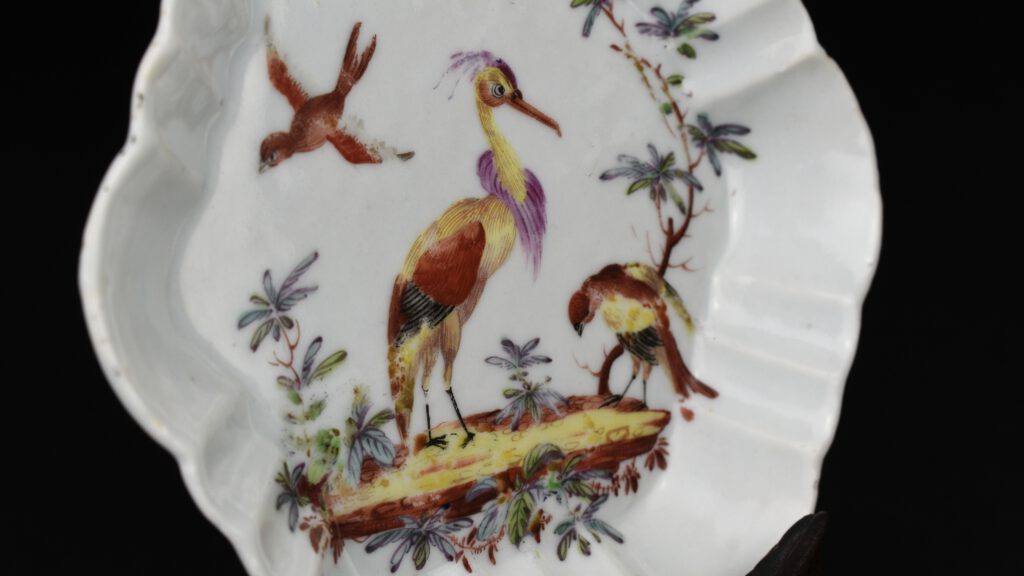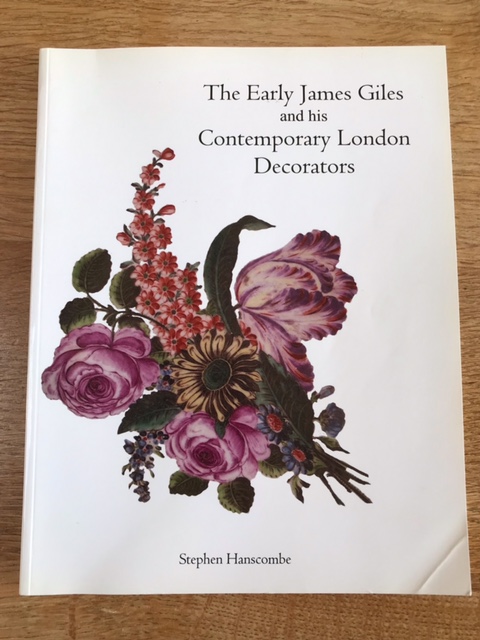
Chinese Export Porcelain European Decorated Teapot Stand
A London Decorated Chinese Export Porcelain Teapot Stand c.1750-1760, Enamelled in London between c.1757-1762. This blank silver shaped Chinese export porcelain teapot stand was possibly decorated by James Giles’s studio. In Stephen Hanscombe’s book (The Early James Giles and his Contemporary London Decorators, Stephen Hanscombe, Stockspring Antiques, 2008. ISBN 095501592-8) he speculates as to where this teapot stand was decorated “The painting on this stand closely matches that on some Tournai porcelain attributed to either Michele or Henri-Joseph Duvivier, who worked there after they left Chelsea about 1762. It is possible that one of them may have worked briefly at the Giles workshop towards the end of his time in London”.
SOLD
- Condition
- Some wear.
- Size
- Height : 12.3 cm (4 3/4 inches).
- Provenance
- The Stephen Hanscombe Collection of English Decorated Chinese Porcelain.
- Stock number
- 25747
- References
- Exhibited and published : The Early James Giles and his Contemporary London Decorators (Stephen Hanscombe, Stockspring Antiques, 2008. ISBN 095501592-8) item number 98. See the photograph gallery below for images from the catalogue.
Information
English Decoration on Blank Chinese Porcelain
This type of English enamel decoration on Chinese export porcelain should be seen in a different way to what is referred to as `over-decorated` or `clobbered` porcelain. Those terms refer to Chinese porcelain that was imported into Europe as finished articles, but were either too plain for merchants to sell or their profits could be enhanced by adding enamels over the existing Chinese decoration. The present example was plain white when it arrived in England, it would not have been salable and so no merchant would have ordered it to retail. However, James Giles must have ordered allot of white porcelain specifically for decoration at his workshop in London. The shapes ordered were the lasted fashion in Europe as was the decoration he added. To my mind this makes these objects separate and distinct from other Chinese porcelain, China only provided the blank `canvas` and even that was of a form dictated to by Europe. For this reason these objects could primarily be see as English, they would have been totally alien to the Chinese.

